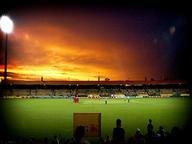Quiz Answer Key and Fun Facts
1. We begin our journey in Adelaide, the capital city of South Australia, standing next to a bent-over gum tree now petrified with age. Next to this gum tree, the colony of South Australia was proclaimed in December of which year?
2. Hopping into the car, we head south, travelling down to Cape Jervis on the tip of the Fleurieu Peninsula. Here, we'll be catching the SeaLink ferry to an island famed for its natural beauty and wildlife. Where are we going?
3. Fresh off the ferry back in Cape Jervis, we drive along the southern coast of the Fleurieu Peninsula around to a popular seaside resort town. This town has a large island of granite just off its coast and welcomes Southern Right whales to its waters every winter. Where are we now?
4. Back into the car again, we head slightly inland and drive around the shores of Lake Alexandrina. After reaching the northernmost point of the lake, we turn south, still following the lake's shore, and head for Meningie, a town on the shore of Lake Albert, itself an offshoot of Lake Alexandrina. Bearing west, we drive through Meningie and find ourselves on the shores of an incredibly beautiful lagoon, teeming with birds and other wildlife. Stepping out of the car, we take a deep breath of the salt-tinged air and admire the beauty of _________.
5. On the road once more, we travel still further south, driving through the coastal towns of Robe, Beachport and Millicent on the way to a town named after a now-dormant volcano.
6. Having spent some time in the state's southeast, we decide it's time to head back up north. Driving back through the Adelaide Hills, we bypass Adelaide and wind up in Nuriootpa, at the heart of one of Australia's most well-known wine-making districts. Where are we?
7. Pointing the car north once more, we pass through the towns of Burra, Peterborough and Hawker on the way to a spectacular rock formation. Forming a U-shape, this natural feature is part of a mountain range known as the Flinders Ranges. We are heading for ________.
8. Still travelling north, we're now heading into the true outback region of South Australia, so make sure you've slapped on plenty of sunscreen! Skirting the Flinders Ranges National Park, we pass through Lyndhurst before arriving in the town of Marree, situated southeast of a large salt lake that has filled only a few times in living history. What is the lake's name?
9. Travelling northeast from Marree, we enter the Strzlecki Desert, part of a desert region covering the entire northeastern corner of South Australia. In the heart of this arid region is a town best known for its processing of natural gas and the pipeline used to transport this gas to Adelaide.
10. Our next stop is on the edge of the Simpson Desert, the driest place in Australia. Not surprisingly, this town has held the record for the highest temperature in South Australia since accurate record-keeping began and standard instrumentation was introduced. It is also one end of a famous "track" bearing its name.
11. Heading southwest now, our next stopping place could be easy to miss, since most of its buildings are underground. This town is also famous for its opal; what is its name?
12. After stocking up on fuel and water, we head south once more along the Stuart Highway. We don't have time to make a stop on this trip, but to the west lies a vast, treeless landscape whose main feature is the Eyre Highway leading to Western Australia. This feature is the _________.
13. We really will have to come back and visit that part of South Australia next time. Meanwhile, we're still heading south, en route to a town located at the very tip of Eyre Peninsula. Famous for its tuna fishing and aquaculture, what is the town's name?
14. Northwards bound again, this time driving up the eastern side of Eyre Peninsula, through Port Augusta and around the top of Spencer Gulf. Further down the eastern coast of Spencer Gulf awaits our next destination; best known for its smelting facilities, what is its name?
15. Travelling south once again, our last stop before heading back to Adelaide is located at the top of Yorke Peninsula. This town is part of a trio forming "The Copper Triangle" and promotes itself as "Australia's Little Cornwall".
Source: Author
NatalieW
This quiz was reviewed by FunTrivia editor
Exit10 before going online.
Any errors found in FunTrivia content are routinely corrected through our feedback system.


